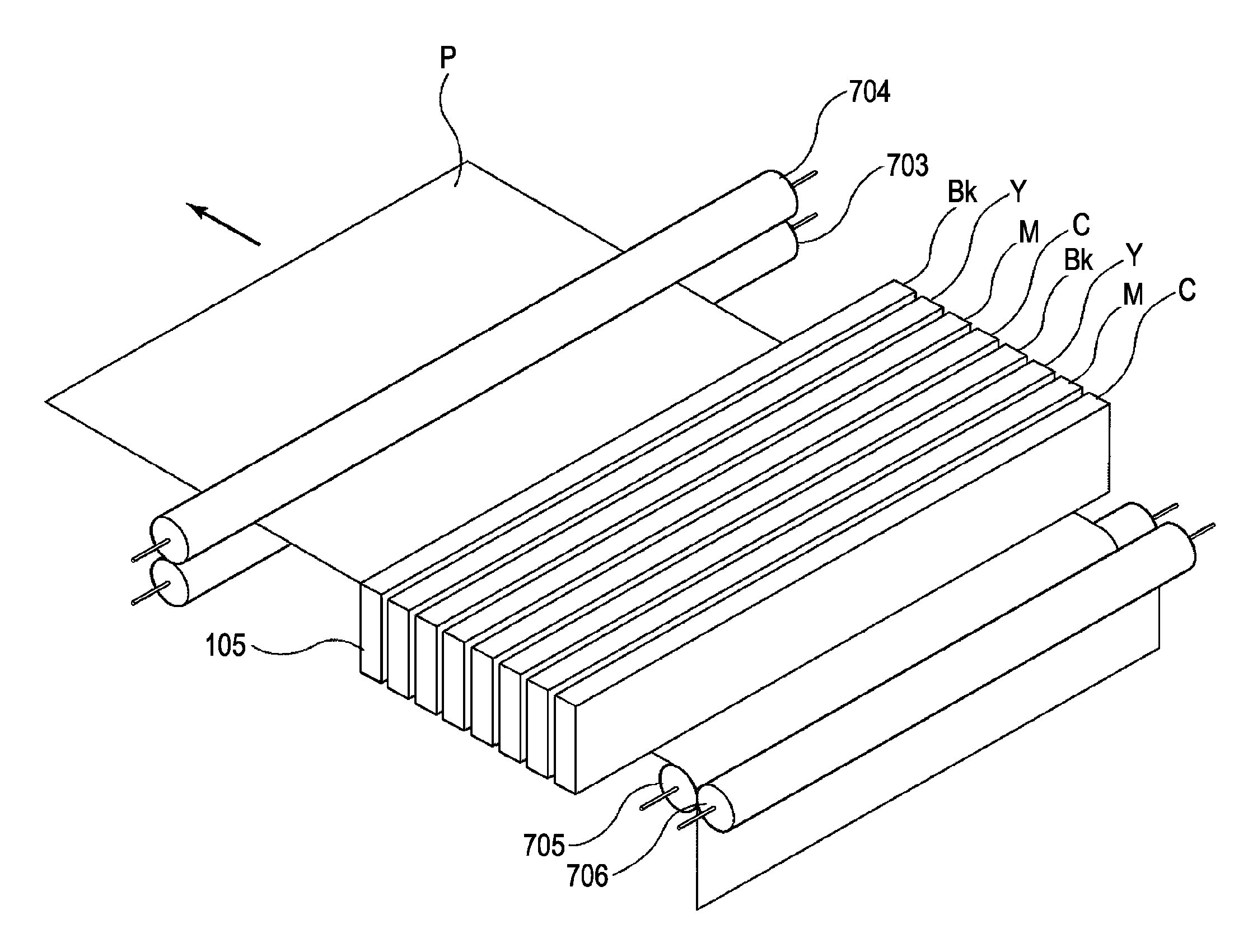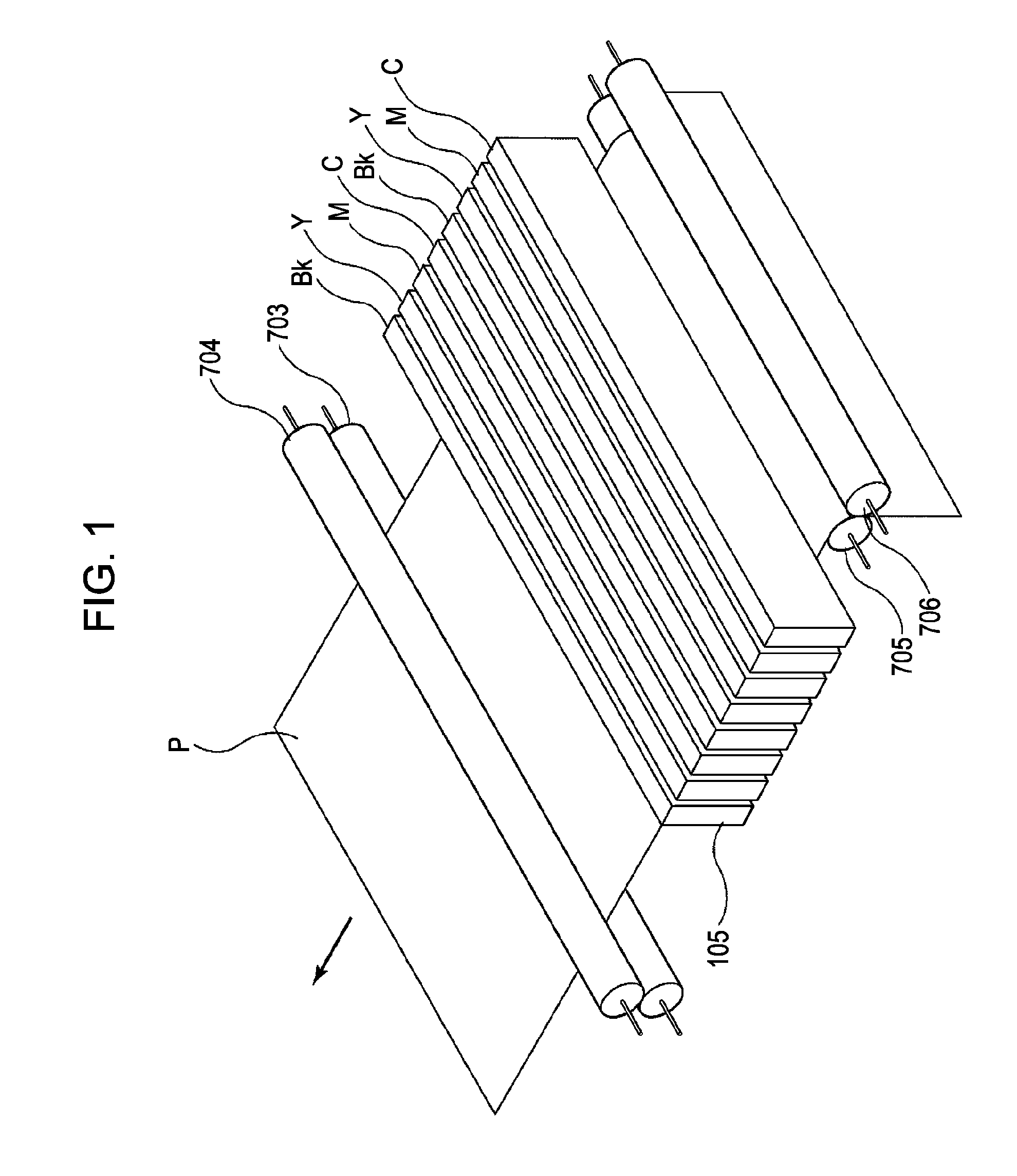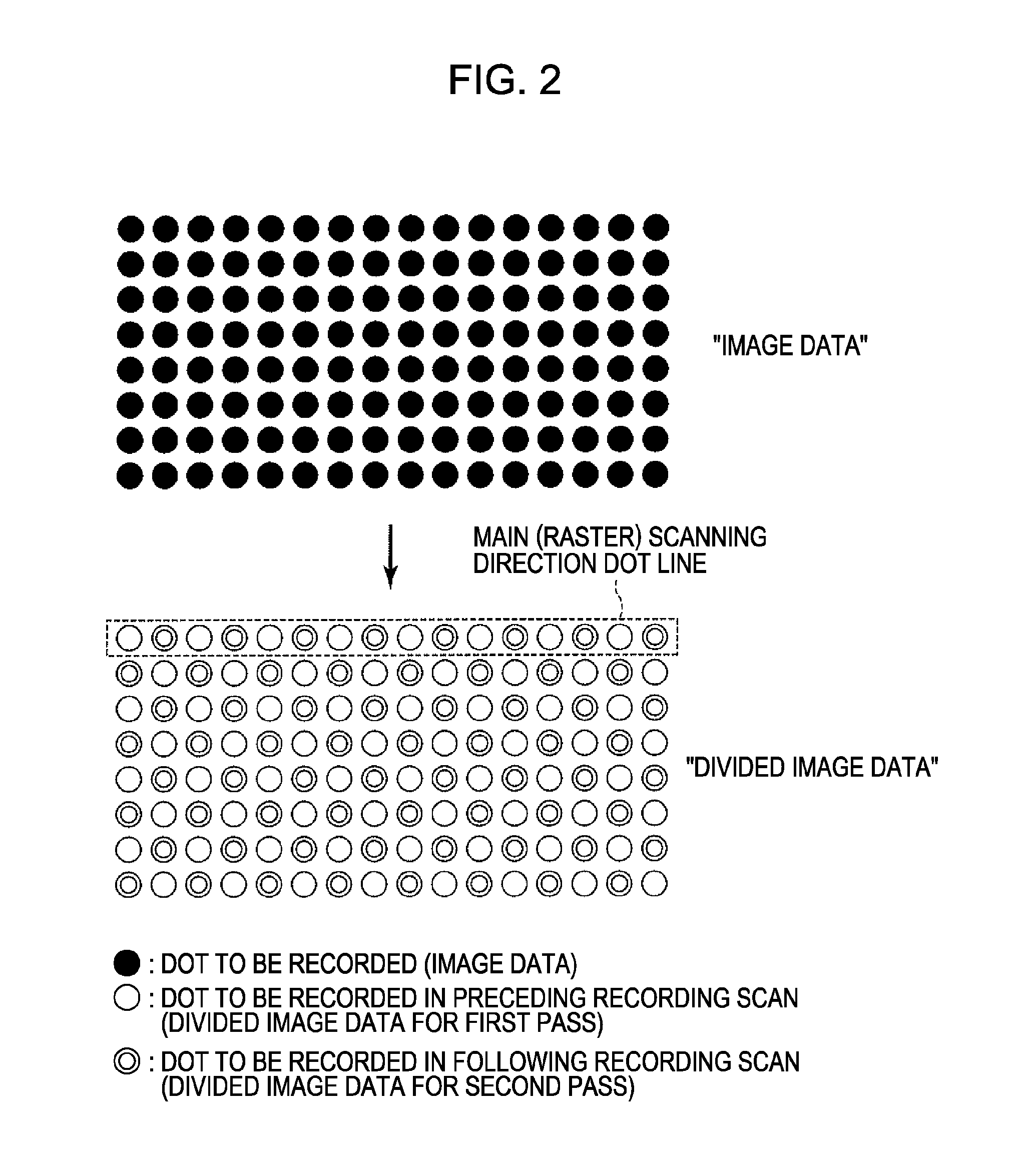Image processing apparatus, image forming apparatus, and image processing method
a technology of image processing and forming apparatus, applied in the field of image processing apparatus and image processing method, can solve the problems of color density unevenness and streaks in images, reducing color density change, and reducing printing speed
- Summary
- Abstract
- Description
- Claims
- Application Information
AI Technical Summary
Benefits of technology
Problems solved by technology
Method used
Image
Examples
exemplary embodiment 1
[0060]FIG. 1 is a schematic diagram for describing an internal configuration of a full-line type inkjet recording apparatus employed in the present invention. A recording medium P is fed by a feeding roller 705 and an auxiliary roller 706 and then conveyed in a direction of a conveying roller 704 and an auxiliary roller 703. The recording medium P is conveyed in a relative scanning direction (conveyance direction) indicated by an arrow while being sandwiched by these two pairs of rollers. During such an operation for conveying the recording medium P, ink is ejected from recording elements of recording heads 105 and an image is recorded on the recording medium P. This operation for conveying the recording medium corresponds to a relative scan (relative movement) between a recording medium and recording heads.
[0061]Two lines of the full-line type recording heads 105 may be arranged, for each of black (Bk), cyan (C), magenta (M), and yellow (Y) heads, in a parallel relationship to each...
exemplary embodiment 2
[0084]An exemplary embodiment 2 also employs a recording apparatus shown in FIG. 1 and an image processing process shown in FIG. 5, which have been described in the exemplary embodiment 1. However, a selecting unit 103 according to this exemplary embodiment does not select a mode in accordance with an attribute of image data as in the exemplary embodiment 1, but instead selects the mode in accordance with a grayscale level (0-255) of image data.
[0085]FIG. 9 is a flowchart for describing mode selection processing executed on each pixel by the selecting unit 103 according to this exemplary embodiment. At step S91, the selecting unit 103 determines whether a grayscale level (e.g., color density level) of a focused processing-target pixel is equal to or lower than a predetermined threshold. If it is determined that the grayscale level is equal to or lower than the predetermined threshold (YES in step S91), the process proceeds to step S92. At step S92, the selecting unit 103 transfers t...
exemplary embodiment 3
[0088]An exemplary embodiment 3 also employs a recording apparatus shown in FIG. 1 and an image processing process shown in FIG. 5, which have been described in the exemplary embodiment 1. However, a selecting unit 103 according to this exemplary embodiment does not select a mode in accordance with an attribute or a grayscale level of image data, but instead selects the mode in accordance with a color of the image data.
[0089]FIG. 10 is a flowchart for describing mode selection processing executed on each pixel by the selecting unit 103 according to this exemplary embodiment. At step S101, the selecting unit 103 determines whether a color of a focused processing-target pixel is black (Bk). If it is determined that the color is not black (NO in step S101), the process proceeds to step S102. At step S102, the selecting unit 103 transfers the processing-target pixel data to the image division precedent processing unit 104. On the other hand, if it is determined that the color of the pro...
PUM
 Login to View More
Login to View More Abstract
Description
Claims
Application Information
 Login to View More
Login to View More - R&D
- Intellectual Property
- Life Sciences
- Materials
- Tech Scout
- Unparalleled Data Quality
- Higher Quality Content
- 60% Fewer Hallucinations
Browse by: Latest US Patents, China's latest patents, Technical Efficacy Thesaurus, Application Domain, Technology Topic, Popular Technical Reports.
© 2025 PatSnap. All rights reserved.Legal|Privacy policy|Modern Slavery Act Transparency Statement|Sitemap|About US| Contact US: help@patsnap.com



